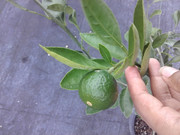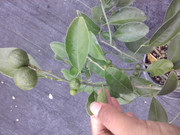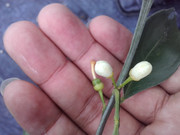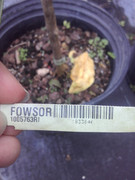Hi all,
So on Monday I went to the store that had the 50% off potted plant New Year Clearance Sale this week, and wanted to pick up a Navel Orange but of course they had all been sold barely 2 hours into the first day of the sale lol. One of the workers said he didn't think they had any more in stock but that they were bringing out more citrus Wednesday, so today I went there again today and there weren't any Navel Oranges ( frown emoticon ) but for the first time they had Satsuma Mandarins! I had never seen these here before, and have no idea how they do in my climate besides probably still being green when they ripen, but they seem like a fair substitute for the Navels, and the little tree is loaded with fruits, so I got one! I'm 99.9% certain it's an Owari although the variety isn't labeled; it's from California and likely to be the most generic variety sold which I understand is Owari. Not sure what this rootstock tag means? 'SOR' might be 'Sour Orange' but not sure what 'FOW' means.
Here's a body shot:

Some of the developing fruits:


Even has flowers:

Ambiguous tag:

Anyone else growing mandarins, especially in containers, and if so how? I'm interested in a cultivation regime, especially for those in more southeastern regions or warm climate areas. Do you think I could up pot it? I'm thinking a 5 gallon to start with. Also any ideas on the rootstock? Never seen a tag with that label before. I'm not even sure which nursery the tree is originally from, but I like it so far

Feel free to confirm whether the tree does look like an Owari!
Dan